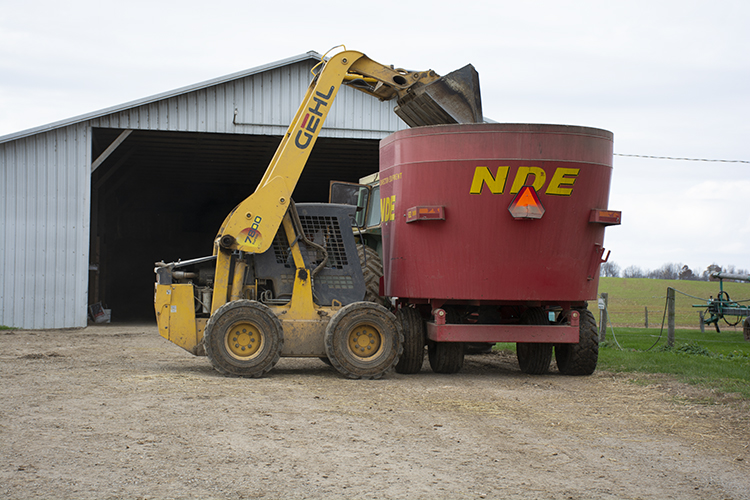
If there was an MVP (most valuable player) award given for farm machinery, I would wager a guess that most dairy farmers would probably give the same reply: the skid steer. On nearly all dairy farms of any size, a skid steer is a tool that is utilized each and every day for a wide variety of tasks. It is common for a farm has more than one of these versatile machines that can move anything from feed to manure.
Frequent use can take a toll on machinery, though, and skid steers may wear out sooner than other pieces of machinery due to their repeated use and because of the jobs they are asked to do. During an I-29 Moo University Podcast hosted by dairy extension educators in Iowa, Minnesota, Nebraska, North Dakota, and South Dakota, skid steer maintenance and trade-in values were discussed.
This episode featured guest speakers from Farmers Implement and Irrigation, with locations in Brookings and Watertown, S.D. They all agreed that regular maintenance is a key component of skid steer longevity.
“Maintenance will determine how long a machine will last,” shared one of the experts. This includes regular service appointments, oil changes, and greasing.
“Keep up on daily and weekly maintenance, plus hour increments,” said another expert. “A lot of people overlook skid steers when it comes to maintenance. It is the first machine to get used but the last to get looked at.”
The group noted that dairy farm work is particularly hard on skid steers. One option is to add machines so that they can rotate between different applications. For instance, perhaps a skid steer could be used by the feed pile for a while, then move to scraping manure in the barn. By rotating between different jobs, one may be able to stretch out the useful life of the machine.
They also recommended daily washes for machines that get dirty. This prevents harsh materials like manure from eating through the paint and steel.
If you are looking to trade-in a skid steer, keeping the machine clean and well maintained will help hold its value longer. The team acknowledged that this takes extra time, but people who keep skid steers in top condition can collect a trade in value considerably better than average.
They recommended 2,000 to 2,500 hours as a good time to consider trading in a skid steer. While the machine will still have a lot of life left, in their experience, the trade-in value goes down considerably after 3,000 hours of use.
The group noted that they have serviced skid steers that are still working well at 8,000 and 9,000 hours, but in these cases, maintenance is on schedule and the machine has been well taken care of its entire life.
If buying a used skid steer, they offered a few tips. For starters, find out where it came from and what it was used for. Have a dealer go through the maintenance checkpoints, such as evaluating the hydraulics and looking for leaks.
The also encouraged potential buyers to climb in and operate the machine to be sure it runs as it should. “It’s not that complicated,” one of them remarked. “You can usually tell if the machine has been well maintained or not.”
Whether a skid steer is pushing feed, dirt, snow, or manure, much like farmers, they are almost always on the go. Taking time to maintain this MVP of farm equipment will go a long way in extending its useful life and protecting its trade-in value.

The author is the senior associate editor and covers animal health, dairy housing and equipment, and nutrient management. She grew up on a dairy farm near Plymouth, Wis., and previously served as a University of Wisconsin agricultural extension agent. She received a master’s degree from North Carolina State University and a bachelor’s from the University of Wisconsin-Madison.








